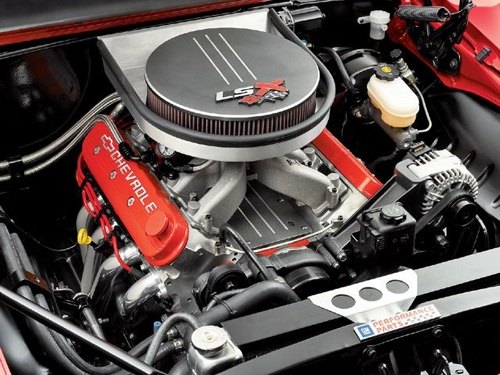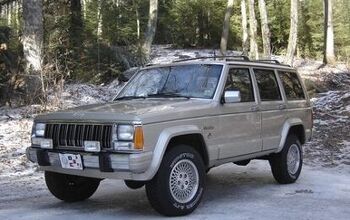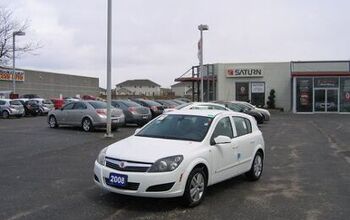Piston Slap: Pushrod Prattle Edition

TTAC commentator edgett writes:
Since the current pushrod LS-X engines reportedly offers a better power-to-weight ratio than an equivalent Porsche engine, and returns excellent fuel economy, why aren’t other manufacturers emulating the same kinds of evolutionary upgrades which GM applied to their small-block V8?
Sajeev answers:
Naturally aspirated Porsche boxers may be lighter than an LS-X, but don’t bother comparing their power bands (i.e., area under the curve). The Porsche turbos are comparable, but weight is not their friend.
But your question is kinda wrong: all manufacturers apply evolutionary upgrades to their motors. It is do or die, even if GM Powertrain couldn’t save the Mothership from bankruptcy. But I digress. The LS-X thrives with fewer and lighter materials, lower center of gravity and abundant torque from a physically simple design with massive displacement: even with (fuel economy) taller gearing. Plus, they are cheap to make and getting more common in junkyards.
Which makes for a great power/economy combination in Frankenstein heart transplants. [If the Houstonian who owns the LS-6 powered Porsche 914 is reading: I want a ride in your car. E-mail me.] Speaking of evolution, wait until the LS-X gets direct injection and/or variable valve timing like its competition. They could be unstoppable, if GM Powertrain gets the money to make it happen. Start holding your breath . . . NOW!
Bonus! A Piston Slap Nugget of Wisdom:
The LS-X’s modern OHV architecture is the key to its success. Yes, I said “modern.” The 1949 Kettering/Oldsmobile OHV V8 is some 50 years newer than Karl Benz’s Boxer, 30-ish years newer than the first OHC motors. Just remember that when someone says that Detroit V8s are ancient dinosaurs.
[Send your technical queries to mehta@ttac.com]

More by Sajeev Mehta
Latest Car Reviews
Read moreLatest Product Reviews
Read moreRecent Comments
- Kwik_Shift_Pro4X Where's the mpg?
- Grg These days, it is not only EVs that could be more affordable. All cars are becoming less affordable.When you look at the complexity of ICE cars vs EVs, you cannot help. but wonder if affordability will flip to EVs?
- Varezhka Maybe the volume was not big enough to really matter anyways, but losing a “passenger car” for a mostly “light truck” line-up should help Subaru with their CAFE numbers too.
- Varezhka For this category my car of choice would be the CX-50. But between the two cars listed I’d select the RAV4 over CR-V. I’ve always preferred NA over small turbos and for hybrids THS’ longer history shows in its refinement.
- AZFelix I would suggest a variation on the 'fcuk, marry, kill' game using 'track, buy, lease' with three similar automotive selections.


































Comments
Join the conversation
chaparral66 : and Aqua225: The loop hole described was the amount of boost allowed for DOHC vs. pushrod. Chaparral is correct, it was just a case of mercedes finding a loop hole in the rules that had never been shut bc it was assumed that no one would ever go back (was originally done for teams running the old Buick V6's I believe). Similar to what F1 was trying to do with giving the low-budget teams a variable wing, it wouldn't matter what the high budget teams did, they couldn't compete with that. The differential in boost allowed meant that no matter what was done with an OHC engine within the rules there was no way it could compete with the pushrod in that situation (personally the most boring Indy500 in history)
Interestingly, Corvette Coupe LT1 6.2L V8 (pushrod) Power: 430 @ 5900 RPM Torque: 424 @ 4600 RPM C-Class C63 AMG Sport Sedan 6.2L 451 hp V8 (OHC) Power: 451 @ 6800 RPM Torque: 443 @ 5000 RPM